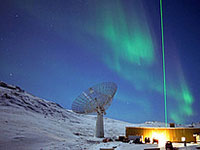Lasers for LIDAR Seeding
Diode Lasers for LIDAR
- Geology
- Seismology
- Remote sensing
- Atmospheric physics
- TOPTICA’s added value
LIDAR applications
LIDAR, light detection and ranging, is an optical remote sensing technology which analyses the properties of scattered light to find range or other information about a distant target. In most LIDAR applications one uses pulsed lasers due to their timing resolution and their high power. Very frequently, however, these pulsed lasers have to emit at a very precise wavelength. In order to achieve the desired wavelength stability, one uses cw diode lasers to seed the pulsed laser with stable laser light. Sometimes, the seeding lasers are even locked to external references like Fabry-Perot Interferometers, wavelength meters or atomic transitions. For laser ranging, the distance to an object is determined by measuring the “time of flight”, the time it takes for the laser pulse to travel from the sender to the object and back. Measuring both, the time delay and the scattered or intensity of a laser pulse that is resonant to a transition of a certain atom or molecule, one can measure the spatial (distance) dependence of its density. Amongst others, LIDAR technology has applications in geology, seismology, remote sensing and atmospheric physics.
TOPTICA's value
TOPTICA’s added value is in providing best cw seeding lasers and external references for LIDAR. With their extremely narrow linewidth, high frequency stability and unmatched wavelength availability, TOPTICA's scientific lasers are ideal seeders for the high power pulsed lasers employed for LIDAR. Fiber coupling with the ultrastable FiberDock allows for straight forward implementation of our lasers. We also offer the most accurate and most stable wavelength meters, Fabry-Perot interferometers (FPI 100) and spectroscopy cells or spectroscopy modules as well as electronic locking modules which are needed to stabilize a cw diode laser to an external reference.

